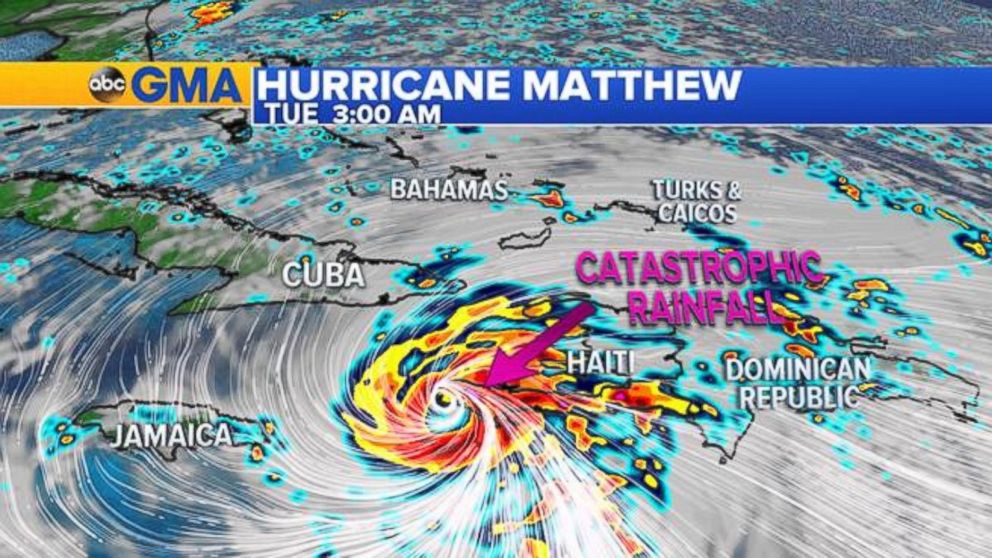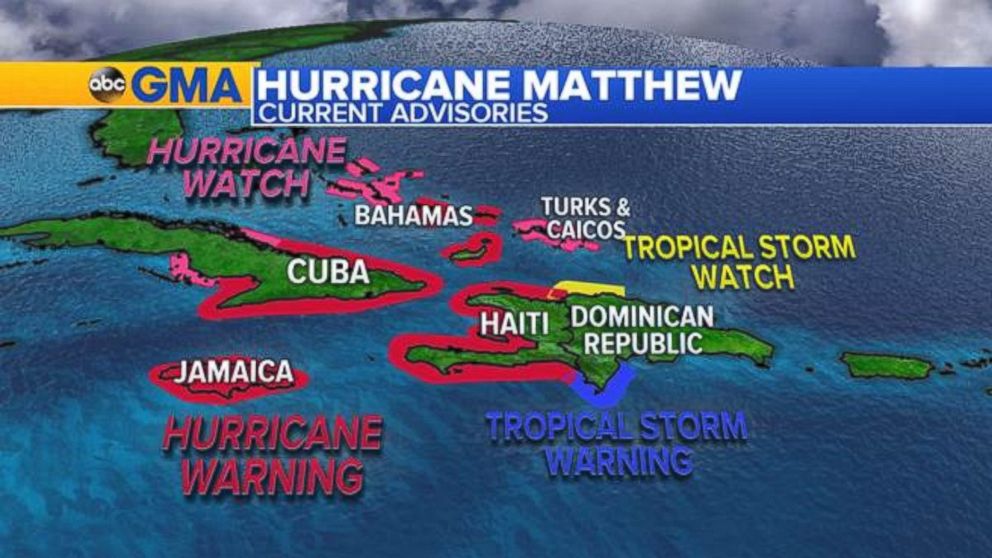Hurricane Matthew Bears Down on Caribbean, US Partially Evacuates Guantanamo Base
Hurricane Matthew packs 130 mph winds, up to 40 inches of seen rain in spots.
— -- Hurricane Matthew inched its way toward several Caribbean countries on Monday, churning northwest at just 5 mph over the warm waters of the Caribbean with maximum sustained winds of 130 mph.
The Category 4 storm is expected to approach Jamaica and southwestern Haiti by Monday night, where the worst of the storm is expected to be felt. But Matthew was already bringing heavy rain, dangerous ocean conditions and flooding to the region.
Schools in Haiti will be closed on Monday and Tuesday. Government officials there are urging residents in landslide-prone areas to heed possible evacuation and preparation orders. The U.S. State Dept. ordered embassy personnel in Port-au-Prince, Haiti, to shelter in place. State Department officials advise all American citizens in the country also to shelter in place.
In Jamaica, government officials are making a strong appeal for residents in flood-prone areas to evacuate.

Hurricane warnings are in effect for Jamaica, Haiti, parts of Cuba and the southeastern Bahamas. A Hurricane watch is in effect for parts of Cuba, Turks and Caicos and the central Bahamas. Tropical storm warnings and watches have been issued for parts of the Dominican Republic.
"The greatest concern is the widespread threat of catastrophic flash flooding," said ABC News meteorologist Daniel Manzo.

Matthew is expected to produce rain accumulations of 15 to 25 inches across southern Haiti and the southwestern portion of the Dominican Republic, with possible isolated amounts of 40 inches, according to the National Hurricane Center in Miami.
"This will likely produce life-threatening flash flooding and mudslides in a region that does not have the infrastructure to deal with it," Manzo warned.
Storm surge could be as high as 15 feet in the Bahamas and up to 11 feet in Haiti. Waves and rip currents will create life-threatening ocean conditions throughout the region.
The center of the hurricane was expected to pass about 50 miles east of the U.S. Navy base at Guantanamo Bay, where authorities evacuated about 700 spouses and children of service members on military transport planes to Florida, The Associated Press reported.
The U.S. installation has a population of about 5,500, including 61 men held at the detention center for terrorism suspects. Navy Capt. David Culpepper, the base commander, said emergency shelters have been set up and authorities were bracing for 80 mph winds and storm surge and heavy rain, which could threaten some low-lying areas, including around the base's power plant and water desalination facility.
"We have no choice but to prepare ourselves ... to take a frontal assault," Culpepper told the AP.
The last hurricane to make landfall in Haiti was Gustav, a Category 1 storm in 2008.
At this time, it is too early to tell whether the East Coast of the United States will be affected.
ABC News meteorologist Daniel Manzo and The Associated Press contributed to this report.